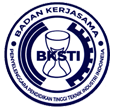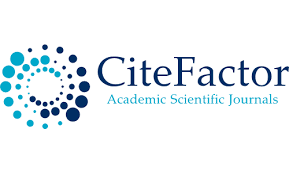Application of Quality Function Development (QFD) to Improve Quality and Develop Porang Rice Product XYZ
Abstract
Keywords
Full Text:
PDFReferences
Fonseca, L., Fernandes, J., & Delgado, C. (2020). QFD as a tool to improve negotiation process, product quality, and market success, in an automotive industry battery components supplier. Procedia Manufacturing, 51(2019), 1403–1409. https://doi.org/10.1016/j.promfg.2020.10.195
Hadi, H. A., Purba, H. H., Indarto, K. S., Simarmata,R. G. P., Putra, G. P., Dabith Ghazali, D., and Aisyah, S. (2017). The implementation of quality function deployment (QFD) in tire industry. ComTech: computer, mathematics and engineering applications, 8(4), 223-228. https://research.binus.ac.id/publication/57FBA517-3939-4FA7-A173-02BFEF41489A/the-implementation-of-quality-function-deployment-qfd-in-tire-industry/.
Li, W., Yüksel, S., & Dinçer, H. (2022). Understanding the financial innovation priorities for renewable energy investors via QFD-based picture fuzzy and rough numbers. Financial Innovation, 8(1). https://doi.org/10.1186/s40854-022-00372-3
Mubarok, A. A., & Sasongko, R. M. (2023). Menerjemahan Voices of the Customer (VoC) Kedalam Inovasi Produk Melalui Quality Function Deployment (QFD) pada UMKM KULINER. Journal of Economic, Business and Engineering (JEBE), 4(2).
Nalhadi, A., Subentar, B., & Supriyadi, S. (2022). Perancangan Kemasan Produk Kue Gipang Pangrih Menggunakan Metode Quality Function Deployment. JiTEKH, 10(2), 52–59. https://doi.org/10.35447/jitekh.v10i2.560
Nurcahya, S. B., Mantri, Y. M., Hatimatunnisani, H. (2022). Analisis Potensi Porang sebagai Pengganti Beras untuk Ketahanan Pangan di Kabupaten Pangandaran. Jurnal Pendidikan, Humaniora, Linguistik dan Sosial (JAGADDHITA), 1(1), 22-32. https://doi.org/10.58268/jagaddhita.v1i1.18
Purba, H. H., Sunadi, S., Suhendra, S., & Paulina, E. (2020). The Application of Quality Function Deployment in Car Seat Industry. ComTech: Computer, Mathematics and Engineering Applications, 11(1), 35-42. https://doi.org/10.21512/ comtech.v11i1.6329
Sales, J. P. De, Salvador, J., Bastos, B., Araujo, A. H. De, Almeida, G. De, & Santos, G. (2021). Barbosa Quality Management in the Contours of Continuous. 16(3), 689–702.
Setyabudi, M. F., Kurniawan, M. D., & Jufriyanto, M. (2022). USULAN Pemasaran Produk Gawang Baju Menggunakan Metode SWOT dan QFD (Studi Kasus: UKM Avandi Teknik). JISI: Jurnal Integrasi Sistem Industri, 9(1), 25. https://doi.org/10.24853/jisi.9.1.25-35
Siwiec, D., Pacana, A., & Gazda, A. (2023). A New QFD-CE Method for Considering the Concept of Sustainable Development and Circular Economy. Energies, 16(5), 1–21. https://doi.org/10.3390/en16052474
Wahyunawati, S. (2023). Penggunaan Matriks SWOT dan QSPM dalam Menentukan Strategi Pengembangan Kompetensi Karyawan PT.Ketapang Subur Lestari. MAMEN (Jurnal Manajemen) 2(1), 44–59. https://doi.org/10.55123/mamen.v2i1.1365
Wicaksono, T., Hossain, M. B., & Illés, C. B. (2021). Prioritizing business quality improvement of fresh agri-food smes through open innovation to survive the pandemic: A qfd-based model. Journal of Open Innovation: Technology, Market, and Complexity, 7(2), 156. https://doi.org/10.3390/joitmc7020156
DOI: http://dx.doi.org/10.22441/ijiem.v5i1.23104
Refbacks
- There are currently no refbacks.

This work is licensed under a Creative Commons Attribution-NonCommercial 4.0 International License.
IJIEM - Indonesian Journal of Industrial Engineering & Management
Program Pascasarjana Magister Teknik Industri Universitas Mercu Buana
Kampus Menteng - Gedung Tedja Buana, Floor 4th
Jl. Menteng Raya No. 29 Jakarta Pusat- Indonesia
Tlp.: +62 21 31935454 Fax: +62 21 31934474
http://publikasi.mercubuana.ac.id/index.php/ijiem
Email: [email protected]

This work is licensed under a Creative Commons Attribution-NonCommercial 4.0 International License.
The journal is indexed by:





1.png)
.png)
.png)
.png)







